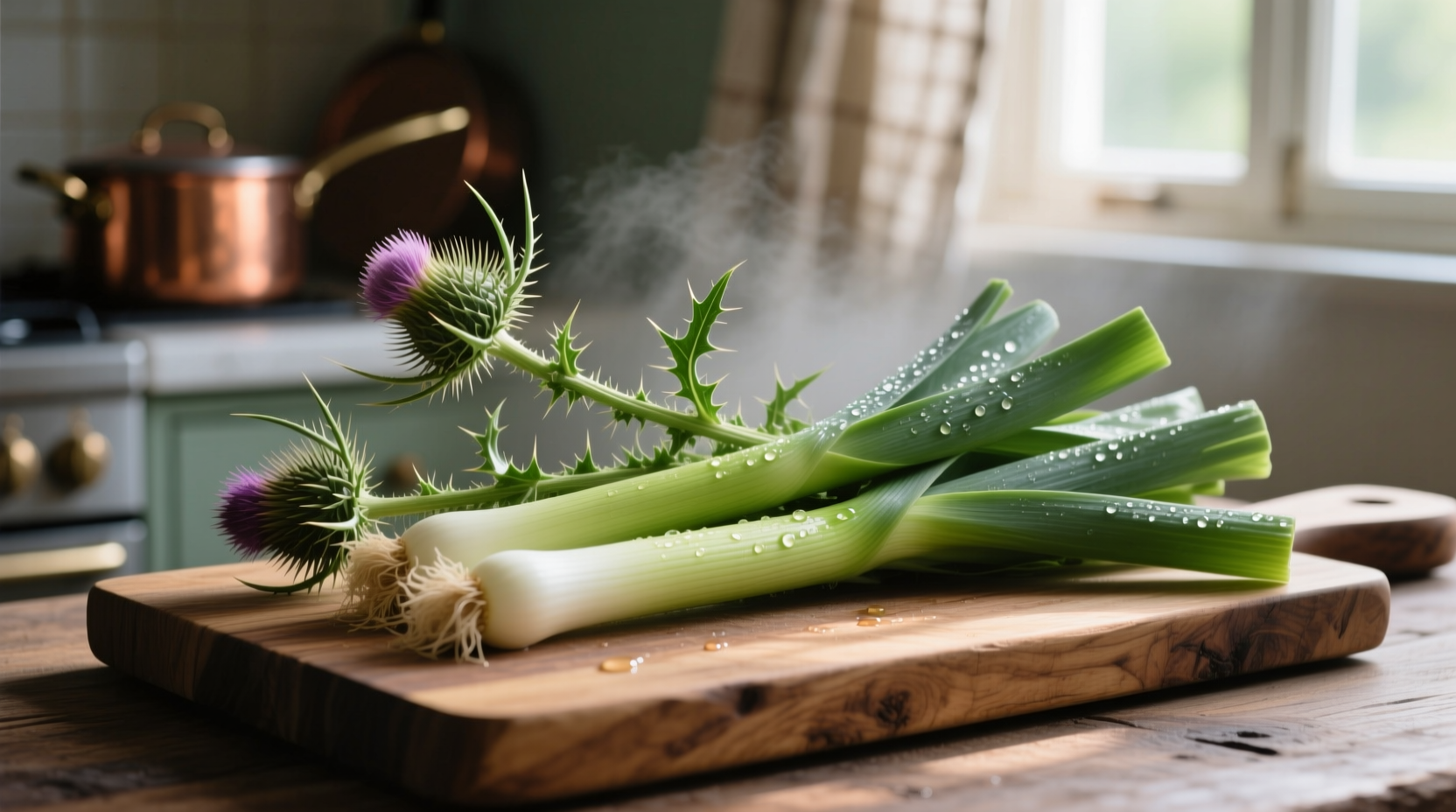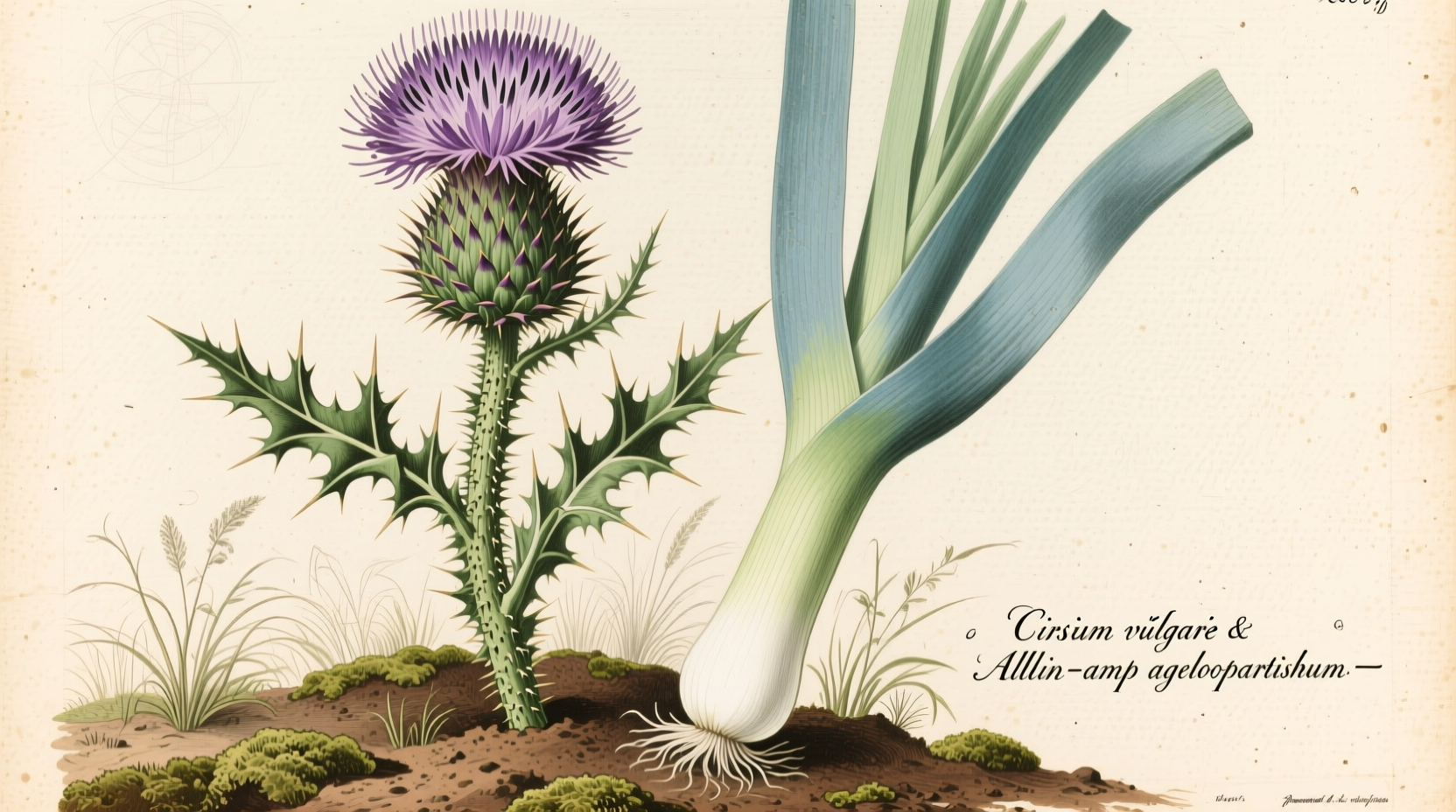Thistle and leek have been culinary staples in European cooking for centuries, with historical records showing their use dating back to medieval times. The cardoon thistle (Cynara cardunculus) and common leek (Allium ampeloprasum) offer unique flavors and nutritional benefits when properly prepared, though many modern cooks remain unfamiliar with traditional preparation techniques that transform these ingredients from bitter to delectable.
For home cooks exploring historical European cuisine, understanding these ingredients unlocks authentic flavors that supermarket produce sections rarely showcase. Unlike their more popular cousin the artichoke, thistles require specific preparation to remove bitterness while preserving their distinctive nutty flavor profile. Leeks, meanwhile, offer a milder alternative to onions with culinary versatility spanning from rustic stews to refined sauces.
From Field to Feast: The Journey of Thistle and Leek
When you encounter thistle in the wild or at specialty markets, your first challenge is proper identification. Not all thistle varieties are edible—only specific types like cardoon and globe thistle have culinary value. Similarly, leeks require careful cleaning to remove trapped soil between their layers. This initial selection and preparation phase determines whether your dish succeeds or fails.

Historical Significance Through the Ages
European culinary traditions reveal how thistle and leek evolved from peasant foods to gourmet ingredients. Ancient Romans prized cardoon thistle as a delicacy, while medieval European monks cultivated leeks for monastery gardens. The Scottish thistle became a national symbol after legend claims Norse invaders were thwarted by warriors alerted to their approach by the invaders' cries when stepping on thistles.
| Historical Period | Thistle Usage | Leek Usage |
|---|---|---|
| Ancient Rome (1st-5th century) | Served in honey sauce at imperial banquets | Used as medicinal herb for digestive issues |
| Medieval Europe (5th-15th century) | Cultivated in monastery gardens, blanched for winter use | Staple in peasant diets, featured in pottage stews |
| Renaissance (15th-17th century) | Featured in elaborate court dishes across Italy and France | Adopted by Welsh soldiers as national emblem |
| Modern Era (18th century-present) | Niche ingredient in regional specialties like Catalan cardoon stew | Global culinary staple in soups, stocks, and gourmet dishes |
Botanical Characteristics and Varieties
Understanding the botanical differences between thistle varieties prevents culinary mistakes. While all edible thistles belong to the Asteraceae family, their preparation requirements vary significantly:
- Cardoon (Cynara cardunculus) - Requires blanching and careful trimming of spines; stalks are the primary edible portion
- Globe Artichoke (Cynara scolymus) - Technically a thistle variety; flower bud is eaten rather than stalks
- Wild Thistles - Most varieties are inedible or require extensive preparation to remove bitterness
Leeks present fewer identification challenges but vary in size and flavor intensity. Summer leeks are slender with milder flavor, while winter varieties grow thicker with more pronounced onion notes. The white and light green portions offer the best texture for cooking, while dark green sections work well for stocks.
Practical Preparation Techniques
Transforming thistle from bitter to delicious requires specific techniques that modern cooks often overlook. The traditional French method involves:
- Trimming all spines with kitchen shears
- Peeling outer fibrous layers with a vegetable peeler
- Soaking in acidulated water (water with lemon juice) for 30 minutes
- Simmering in broth with aromatics for 45-60 minutes until tender
For leeks, proper cleaning is essential. Cut off root ends and dark green tops, then slice lengthwise and submerge in cold water. Swirl gently to release trapped soil, then lift leeks from water (leaving dirt behind). This prevents gritty texture in finished dishes.
Traditional Recipe Applications
Culinary historians have documented numerous traditional preparations that showcase these ingredients' unique qualities:
Cardoon Gratin (French Tradition)
After preparing cardoon stalks as described, arrange in baking dish, cover with béchamel sauce, and top with grated Gruyère cheese. Bake at 375°F (190°C) until golden—approximately 25 minutes. This dish transforms the thistle's natural bitterness into complex nutty flavors.
Welsh Leek and Potato Soup
Sauté 4 chopped leeks in butter until translucent, add 2 pounds diced potatoes and 4 cups vegetable stock. Simmer until potatoes are tender, then blend until smooth. Finish with cream and fresh chives. This traditional recipe highlights leeks' sweet, mild onion flavor without overpowering heat.
Modern Culinary Considerations
When incorporating thistle and leek into contemporary cooking, consider these practical factors:
- Seasonality matters - Cardoon thistle is best from October through March, while leeks peak from September to April
- Substitution limitations - Artichokes cannot replace cardoon in traditional recipes due to texture differences
- Nutritional synergy - Both ingredients provide prebiotic fibers that support gut health when consumed together
Professional chefs note that modern agricultural practices have reduced the bitterness in cultivated cardoon varieties, making preparation somewhat easier than historical methods required. However, proper preparation remains essential for optimal flavor development.
Storage and Selection Tips
When selecting thistle stalks, look for firm, crisp specimens without brown spots. Leeks should have bright green tops and white bases free from slime. Store both wrapped in damp paper towels in the refrigerator's crisper drawer for up to one week. For longer storage, blanch and freeze thistle stalks for use in winter stews.











 浙公网安备
33010002000092号
浙公网安备
33010002000092号 浙B2-20120091-4
浙B2-20120091-4